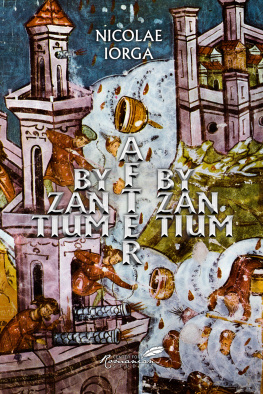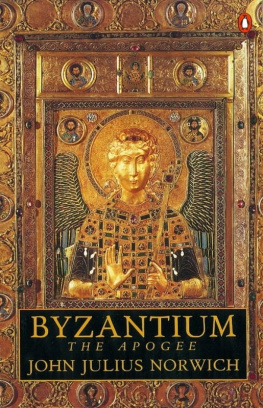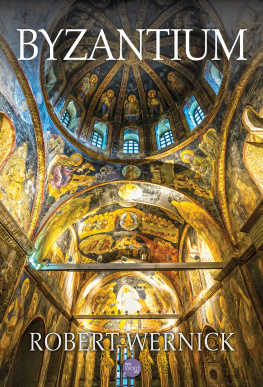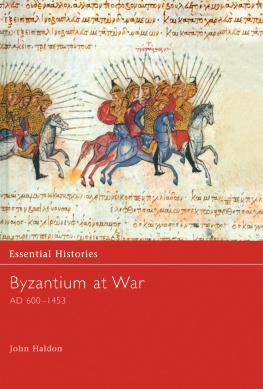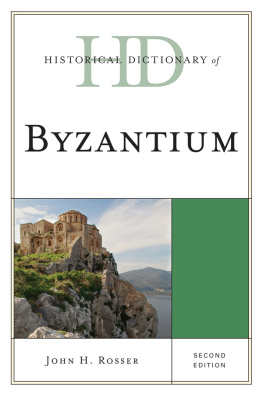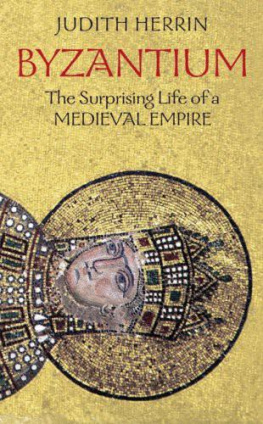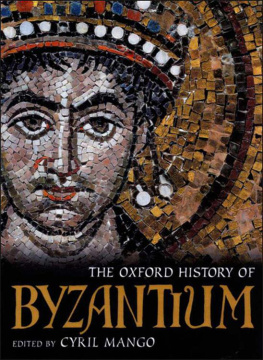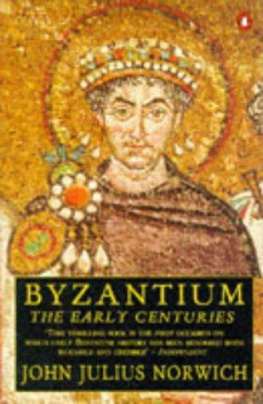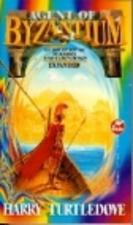Contents
Page List
Landmarks
Byzantium after Byzantium
Nicolae Iorga
Byzantium after Byzantium
Introduction by Academician Virgil Cndea

The Center for Romanian Studies
Las Vegas Chicago Palm Beach
Published in the United States of America by
Histria Books, a division of Histria LLC
7181 N. Hualapai Way, Ste. 130-86
Las Vegas, NV 89166 USA
HistriaBooks.com
The Center for Romanian Studies is an imprint of Histria Books. Titles published under the imprints of Histria Books are distributed worldwide.
All rights reserved. No part of this book may be reprinted or reproduced or utilized in any form or by any electronic, mechanical or other means, now known or hereafter invented, including photocopying and recording, or in any information storage or retrieval system, without the permission in writing from the Publisher.
Second Printing, 2022
Library of Congress Control Number: 2021938231
ISBN 978-973-9432-09-2 (hardcover)
ISBN 978-1-59211-136-7 (paperback)
ISBN 978-1-59211-259-3 (eBook)
Copyright 1996, 2023 by Histria Books
Contents
Introduction
Today the theory of the Byzantine permanence has an ever increasing number of proponents. A radical branch of modern historiography placed the fall of the Lower Empire in 1204, with the establishing of the Latins in Constantinople; the chronology in most textbooks stops at the year of the conquest of Constantinople by the Turks, 1453, when the Byzantine political power disappeared, destroyed by the armies of Mehmed II. Nevertheless, historians no longer deny that for centuries, until the dawn of the modern age with the establishment of the national states in Southeastern Europe, the institutions and ideas in this part of the world preserved and defended the only form of civilization to which they were culturally connected: those of Byzantium.
The formula Byzantium after Byzantium concisely defines some of the most dramatic centuries of world history. It evokes, first of all, the amazing vitality of the Hellenic-Latin synthesis which fulfilled throughout the Middle Ages the high calling to educate and guide people, even after they fell into a long period of slavery. It also points out the antecedents of a great part of European civilization which has its origins in this superb civilization, comprising all the best that the Old World had to offer.
Byzantium after Byzantium is one of the last major scholarly creations of Nicolae Iorga. Published only five years before his tragic death, it comprises all the characteristics of a classical work: topical at the time of its publication, perennial through its message, addressed to a people (the Romanians), a region (Southeastern Europe), but also to specialists everywhere, it is a work of scholarly information and original thinking; it asserts itself through the rare quality of expressing the judgements of a world about itself, formulated by one of the worlds great historians.
In Byzantium after Byzantium the two fields illustrated by the author coexist admirably that of general history and that of national history , as do the two beliefs he professed the universal vocation of Southeastern Europe and the role of the Romanians in the fulfillment of this vocation. These are the important elements of this book that introduce it equally into world historiography as well as Romanian historiography.
Byzantium endured through people and through autonomies, namely through that which, spiritually or politically, had maintained a relative freedom after the conquest of Constantinople. Among the people exiles, clerics, scholars, merchants, and high officials the most important were the archons and the princes. Among the autonomies, the most powerful and most efficient were Moldavia and Wallachia, much more so than the Christian communities on the continent or on the islands, at Athos or in the Oriental patriarchates. The institutions, ideas, aspirations, education, way of life, and the superior type of human realization, everything that represented the grandeur of a world whose defeated descendants remained faithful to it were saved by hierarchs, archons, and Romanians. Due to them one can speak of a Byzantium after Byzantium. The contents and the judgements of the book are organized around these two realities. The Patriarch and his clergy, The Renaissance through schools, for which Iorga reserved adequate chapters (4 and 8), would not have been possible without the support of archons and princes. Phanarion (chapter 9) knew its epoch of glory, due to the wisdom of the archons, but especially relying on the institutions and the wealth of the Romanian Principalities. There was a time when, as the author says quoting a Phanariot, Marco Porfiropulos, the entire Phanarion was in Bucharest. discovered by the young historian in the archives of Europe during the early years of his brilliant career, the geographical and historical coordinates of this world are emitted from a profound analysis of the documents. They were, in this case, letters signed by the banker Benedetto da Gagliano from Pera, by Ecaterina Salvaresso, princess of Wallachia through her husband Alexander II, by her sister Marioara Vallagra, Ban Michael, Mihnea-voievod Turcitul, Pascal de Marini, his brother John and his wife Esther-Prepia, Nicholas of Peter Piraga, Gaspar Mazza, and Princess Ruxandra. These were letters sent from Constantinople, Trgovite, Vidin, Bucharest, Venice, regarding public or family matters, innocent incidents or political combinations with serious consequences. In this way Iorga evoked the capital role played in the history of Byzantine permanence by the great Greek families forced by the events to seek their salvation and to develop their work, useful to all of Southeastern Europe, through efficient relations with the new sovereigns or useful alliances with the Romanian boyars.
The archons remained a constant preoccupation of Nicolae Iorga, undoubtedly the most prolific in biographical studies, collections of documents or small contributions regarding the Greek families in the epoch of Bondage in their relations with the Romanian principalities. In 1902-1903 he published the documents of the naturalized Cantacuzenus family and of the Hellenized Callimachi family, but his interest in every scholar, political figure, cleric, merchant, and simple Greek traveler in the Romanian principalities is manifested in his studies, collections of documents, and other scholarly contributions throughout his entire career.
The idea of the Byzantine continuity through the Romanians is also expressed in one of Iorgas early works of synthesis, in his History of the Romanian People published in Gotha in 1905. But Iorgas greatest concentration on this aspect of Southeastern European history in his research, writings, lectures, publications, and scholarly initiatives that led to his concept of Byzantium after Byzantium dates from the years of the Balkan Wars, 1912-1913.
Through the Treaty of Bucharest, Ottoman domination in Europe came to an end. The new state of affairs in the Balkans, as Iorga defined the principal problem of the time, to promote research and scholarly cooperation in the field. In his speeches at the Romanian Academy during this period, Iorga also pointed out important Romanian contributions, in the traditional Byzantine sense, to the Eastern Mediterranean world.

